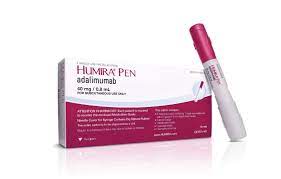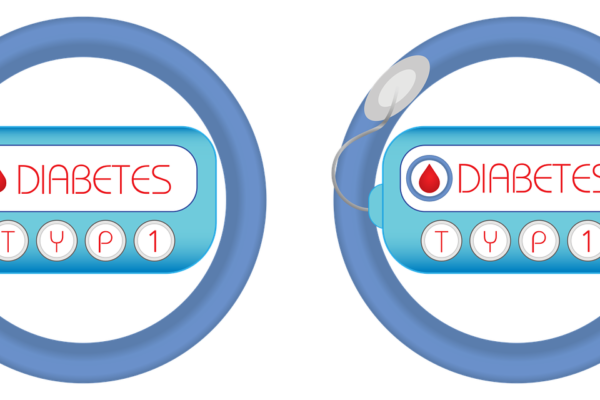Haemophilia
A bleeding ailment called haemophilia slows down blood clotting process. This syndrome causes prolonged bleeding or oozing to occur after an injury, surgery, or tooth extraction in affected individuals. Continuous bleeding, often known as spontaneous bleeding, can happen in people with severe haemophilia after minimal trauma or even when there is no evident damage. Bleeding into the brain, muscles, joints, or other internal organs can have serious consequences. The disorder might not be noticeable until irregular bleeding occurs after surgery or a traumatic accident, and milder forms of haemophilia may not always include spontaneous bleeding.
Haemophilia A, also known as classic haemophilia or factor VIII deficiency, and Haemophilia B, also known as Christmas disease or factor IX deficiency, are the two main subtypes of this illness. Although the indications and symptoms of the two types are quite similar, they are brought on by variations (also known as mutations) in separate genes. Haemophilia B Leyden is a rare variant of the blood disorder that causes severe bleeding episodes in childhood but little difficulties with bleeding beyond puberty.
Based on the amount of clotting factor in the blood, haemophilia is categorised into three severity levels:
Severe condition : is one in which clotting factor levels are less than 1% of normal.
Moderate: Clotting factor concentrations fall between 1% and 5% of the range.
Mild: Levels of clotting factor are between 6% and 40% of normal.
Symptoms
Depending on the severity of the disorder, Haemophilia symptoms can vary, but typical warning signs include heavy bleeding after wounds or scrapes, easy bruising, joint pain, and spontaneous bleeding into muscles or joints.
Causes
The Haemophilias A and B are inherited in an X-linked recessive form. The X chromosome, one of the two sex chromosomes, is home to the genes linked to various diseases. One mutated copy of the gene in each cell is enough to induce the disease in males (who have only one X chromosome). Fathers cannot pass on X-linked features to their sons, which is a trait of X-linked inheritance.
A mutation often needs to exist in both copies of the gene in females (who have two X chromosomes) in order to induce the condition. One mutated copy of the F8 or F9 gene may be sufficient in some cases, though, due to a mechanism known as X-inactivation that turns off the X chromosome that contains the normal copy of the gene. Early in a female embryo’s development, X-inactivation takes place. In somatic cells (cells other than egg and sperm cells), one of the two X chromosomes is permanently switched off (inactivated) by this mechanism. Similar to males, girls have just one active copy of the X chromosome in each body cell thanks to X-inactivation.
X-inactivation typically happens at random, leaving each X chromosome active in roughly half of all body cells. One X chromosome may occasionally be active in more than 50% of cells because X-inactivation is not always random. Skewed X-inactivation refers to X-inactivation that is not random in nature.
The chromosome containing the normal copy of the F8 or F9 gene is turned off in roughly half of the cells in many females with a variation in one copy of the gene. These people often have half as much coagulation factor VIII or coagulation factor IX as normal, which is usually sufficient for healthy clotting. The chromosome containing the normal copy of the gene, on the other hand, is shut off in more than half of cells in certain females with a F8 or F9 gene variant. These people run the risk of experiencing abnormal bleeding because they may have lower levels of coagulation factor VIII or coagulation factor IX than normal.
It’s vital to remember that, in extremely rare circumstances, haemophilia can also develop on its own, without a family history of the condition, as a result of fresh mutations in the clotting factor genes. The majority of instances, however, are passed down from parents who have the faulty gene.
In order to fully understand their risk of passing the disease on to their children and to make educated decisions regarding family planning and managing the condition, people with a family history of haemophilia must undergo genetic testing and get counselling.
Treatment Options
The severity of the disorder, the exact type of haemophilia (A or B), the existence of inhibitors, and the person’s general health all influence the treatment option. Here are some of the several haemophilia treatments:
Replacement Therapies: The standard treatment for haemophilia involves replacing the missing or deficient clotting factor. For haemophilia A, factor VIII replacement is used, while for haemophilia B, factor IX replacement is employed. These clotting factors can be administered intravenously on-demand when bleeding occurs or as prophylaxis to prevent bleeding episodes.
Recombinant Clotting Factors: Recombinant clotting factors are genetically engineered versions of the missing clotting factors. They are free of human plasma-derived impurities and have become the preferred choice due to their safety and effectiveness.
Plasma-Derived Clotting Factors: Clotting factors can also be derived from pooled human plasma. However, due to concerns about potential infections and viral transmission, the use of recombinant clotting factors is increasingly preferred.
Prophylaxis: Prophylactic treatment involves regularly infusing clotting factors to prevent bleeding episodes. This approach aims to maintain a minimum level of clotting factor activity in the bloodstream, reducing the risk of spontaneous bleeding.
On-Demand Treatment: On-demand treatment involves administering clotting factors only when a bleeding episode occurs. It is used for individuals with milder forms of haemophilia or those who prefer not to undergo prophylaxis.
Hemostatic Agents: Topical hemostatic agents, such as clotting factor concentrates or fibrin sealants, can be used to control bleeding from minor injuries or during dental procedures.
Gene Therapy: Gene therapy is an emerging treatment approach that aims to correct the faulty gene responsible for producing clotting factors. This cutting-edge treatment holds the potential to provide long-term or even curative solutions for haemophilia.
Immune Tolerance Induction (ITI): ITI is used for patients with inhibitors, which are antibodies that neutralise clotting factors, making standard treatments less effective. ITI involves high doses of clotting factor infusions over an extended period to induce immune tolerance and reduce inhibitor levels.
Desmopressin (DDAVP): Desmopressin is a synthetic hormone that can stimulate the release of von Willebrand factor, which also helps in clotting. It is primarily used in mild haemophilia A and von Willebrand disease.
Physical Therapy: Physical therapy and joint protection strategies are essential for individuals with haemophilia to prevent joint damage and maintain joint health.
Haemophilia Gene Therapy
An innovative and promising treatment strategy for haemophilia that aims to offer a potential solution for those who have the disease is Haemophilia Gene therapy. Factor VIII is deficient or dysfunctional in haemophilia A and factor IX is defective in haemophilia B. Haemophilia is a hereditary illness that is brought on by mutations in certain clotting factor genes. By inserting functioning copies of the damaged genes into the patient’s cells, gene therapy aims to address the underlying cause of haemophilia.
The general steps involved in haemophilia gene therapy are as follows:
Vector Delivery: Gene therapy relies on a delivery system, known as a vector, to carry the functional clotting factor gene into the patient’s cells. Most commonly, viral vectors, such as adeno-associated viruses (AAVs), are used due to their ability to efficiently and safely transfer genes into target cells.
Target Cell Infusion: The functional clotting factor genes are incorporated into the viral vector, which is then infused into the patient’s bloodstream.
Gene Expression: The viral vector delivers the functional clotting factor genes to the patient’s cells, where they are integrated into the cell’s DNA. As a result, the cells begin to produce the missing clotting factor.
Sustained Expression: Ideally, the introduced genes continue to be expressed over the long term, leading to a sustained production of the missing clotting factor. This is a crucial aspect of gene therapy to provide a lasting effect and reduce the need for frequent treatments.
The main objective of haemophilia gene therapy is to raise the blood’s concentration of the deficient clotting factor to a level high enough to avoid spontaneous bleeding and lessen the requirement for factor replacement therapy.
Haemophilia gene therapy clinical trials have produced encouraging results, with some participants experiencing notable drops in bleeding episodes and a reduced need for conventional clotting factor infusions. However, difficulties still exist, including controlling immunological reactions to the viral vector and assuring long-term efficacy and safety.
Haemophilia gene therapy has the potential to revolutionise the treatment of this chronic disorder, offering patients a potential cure and dramatically enhancing their quality of life. To completely comprehend the security, effectiveness, and sustainability of gene therapy in the context of haemophilia treatment, however, more research and long-term follow-up are necessary.
Pharmaceutical Reach of Haemophilia Market
During the projection period of 2022–2030, the market for Haemophilia Gene Therapy is anticipated to increase from USD 350 million in 2022 to USD 5165.26 million, at a CAGR of 40%.
Even though international healthcare organisations classify haemophilia as a rare disease or condition, there has been a significant increase in the number of haemophilia patients worldwide.
All demographic groups have shown an equally alarming increase in haemophilia. The current state of medical developments allows for management rather than treatment of haemophilia, a hereditary disorder. Haemophilia gene therapy is a transformative procedure that can permanently end the pain of the patient and enhance their quality of life. The use of haemophilia gene therapy is projected to increase due to increased healthcare funding and government programmes aimed at providing treatments for the rarest diseases. Therefore, the global demand for haemophilia gene therapy will be driven by the increasing prevalence of the disease.
The market is segmented into Haemophilia A and Type B with more than 400,000 worldwide suffering from the disease.
North America, Europe, South America, Asia Pacific, the Middle East, and Africa are among the geographical areas evaluated for the market. With a 43.31% market revenue share in 2022, the North American area overtook Europe as the largest global market for haemophilia gene therapy. One of the main factors influencing the market is the existence of a sizable population with haemophilia. Early detection of haemophilia is made possible by the established healthcare system’s sophisticated and comprehensive diagnostics network, and further therapies are provided with equal promptness. The condition’s increasing incidence among middle-aged people will further support market expansion. A key secondary factor that supports the early diagnosis and treatment of infant haemophilia is the well-established paediatric care.
Some of the Key Market Players:
- BioMarin Pharmaceuticals Inc.
- F Hoffmann-La Roche AG
- Freeline Therapeutics
- Pfizer
- Sangamo Therapeutics Inc.
- Shire PLC
- Spark Therapeutics
- Ultragenyx Pharmaceutical
- uniQure NV
- Zoetis
Gene therapy research and development is what propels big pharmaceutical and biotechnology firms. Scientific advances made possible by a strong scientific community and a strong research infrastructure have opened the door to using gene treatments to treat a variety of genetic diseases, including haemophilia. The market’s expansion is supported by the extensive network of insurance programmes and government healthcare programmes.
The cost of haemophilia gene therapy is high since it takes a lot of research to determine what causes a disease or genetic problem. Millions are invested on discovering the disease’s causes and then creating potential therapies. The results of every research or development project, however, are not always positive. The ones that have been successful have invested a lot of money. Gene therapy research and development is time-consuming and expensive. Since it is still in its infancy, genetic engineering and gene editing are relatively new fields of medicine that not everyone can access.
Due to their substantial market power and the fact that there are fewer competitors on the market, they are able to demand higher costs for these therapies. The market’s expansion will be constrained by the high cost of haemophilia gene therapy.
Recent Landmark Developmments
- It has been a landmark moment in the treatment of rare diseases when the U.S. Food and Drug Administration (FDA) and the European Commission both approved HEMGENIX (CSL), the first-ever gene therapy for haemophilia B.
- Roctavian (valocotogene roxaparvovec) was recently approved by the FDA. The most prevalent form of the condition, haemophilia A, has its first gene therapy with this treatment.The cost of the therapy is $2.9 million for a single treatment, according to BioMarin Pharmaceutical, the medicine’s manufacturer. Although the extravagant price is startling, gene therapies are increasingly being offered at rates in the millions of dollars. The seven-figure prices, according to the manufacturers and independent cost-effectiveness research organisations, are justifiable in part because patients will avoid the expenditures of lifelong therapy with alternative therapies.
- 45 male patients with moderately severe or severe haemophilia B were participating in the late-stage experiment of fidanacogene elaparvovec, which Pfizer licenced from Spark Therapeutics. After a single treatment, the gene therapy reduced the annualised bleeding rate by 71%.
Conclusion
The main focus of haemophilia treatment is to effectively avoid and control bleeding episodes. By rectifying the genetic mutation that causes the illness, haemophilia gene editing aims to offer a possibly curative treatment for those who have it. Gene editing tries to precisely alter the defective gene inside the patient’s genome, as opposed to conventional gene therapy, which inserts functioning genes into the patient’s cells.
References:
https://medlineplus.gov/genetics/condition/hemophilia/#inheritance
https://www.thebrainyinsights.com/report/haemophilia-gene-therapy-market-13217
https://www.managedhealthcareexecutive.com/view/what-s-in-the-hemophilia-b-gene-therapy-pipeline-
https://www.coherentmarketinsights.com/market-insight/hemophilia-gene-therapy-market-2480
https://www.factmr.com/report/3107/hemophilia-gene-therapy-market






Leave a Reply